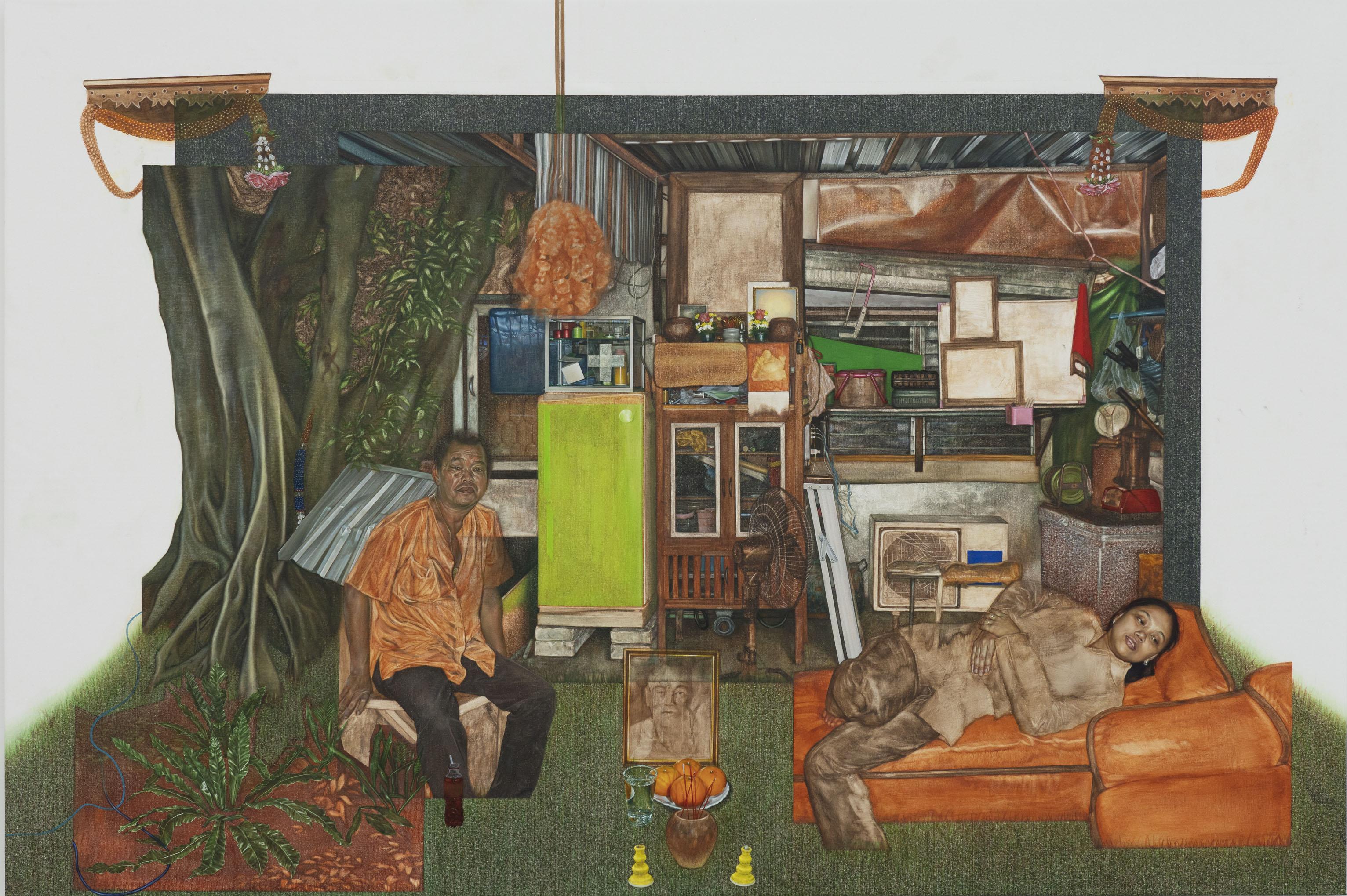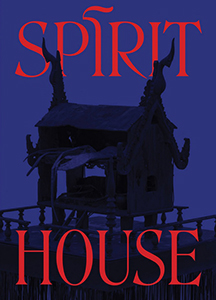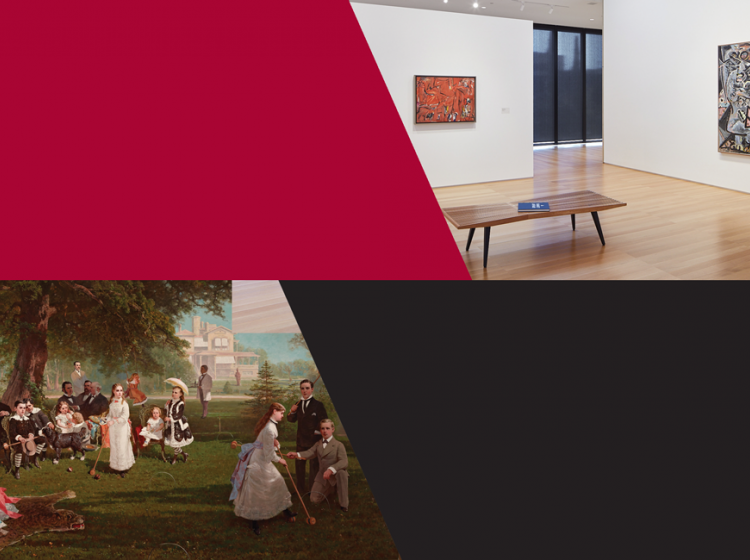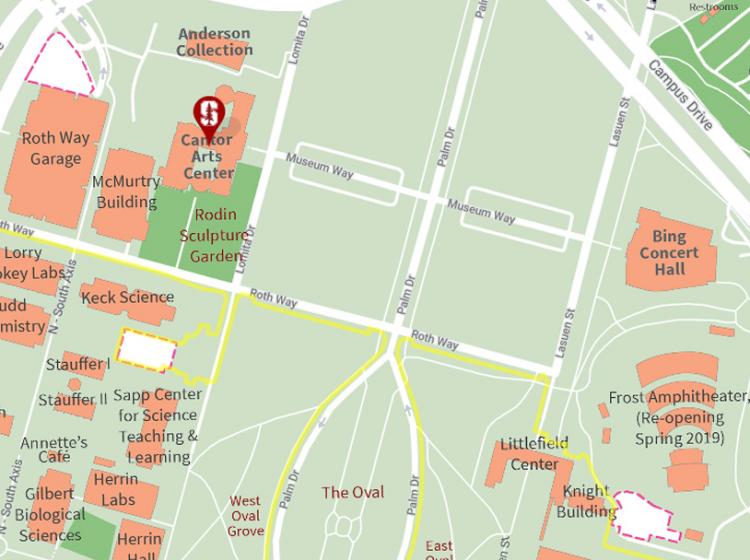Cantor Arts Center
328 Lomita Drive at Museum Way
Stanford, CA 94305-5060
Phone: 650-723-4177

Nina Molloy (b. 1999, Bangkok, Thailand; lives and works in New York, NY), Shrine, 2021–2022. Oil on canvas. Cantor Arts Center, Stanford University. Aey Phanachet and Roger Evans Fund for Contemporary Southeast Asian Art, 2023.69. Image courtesy of the artist and Micki Meng
Spirit House is a significant exhibition related to the museum’s Asian American Art Initiative (AAAI) that investigates how contemporary artists of Asian descent challenge the boundary between life and death through art. A thematic exploration of the work of thirty-three Asian American and Asian diasporic artists, Spirit House asks the question, what does it mean to speak to ghosts, inhabit haunted spaces, be reincarnated, or enter different dimensions? Inspired by spirit houses, small devotional structures found throughout Thailand that provide shelter for the supernatural, this exhibition considers how art can bridge the gap between this world and the next.
Here, contemporary artists reckon with the spiritual and spectral in our visual culture and question the many forms that ghosts can take. In foregrounding intuitive and inherited forms of knowledge, these artists challenge the primacy of data-driven, scientific methods of understanding the world around us.
Participating artists include: Kelly Akashi, Korakrit Arunanondchai, James Clar, Maia Cruz Palileo, Binh Danh, Dominique Fung, Pao Houa Her, Greg Ito, Tommy Kha, Heesoo Kwon, Timothy Lai, An-My Lê, Dinh Q. Lê, Kang Seung Lee, Tidawhitney Lek, Jarod Lew, Reagan Louie, Cathy Lu, Nina Molloy, Tammy Nguyen, Tuan Andrew Nguyen, Catalina Ouyang, Namita Paul, Amanda Phingbodhipakkiya, Kour Pour, Jiab Prachakul, Stephanie H. Shih, Do Ho Suh, Masami Teraoka, Salman Toor, Lien Truong, Apichatpong Weerasethakul, and Wanxin Zhang.

 Catalogue
CatalogueThis exhibition will be accompanied by a substantial scholarly catalogue, the first of a series of AAAI-related books the museum will produce to foster scholarship on Asian American art and to introduce leading Asian American artists to wider audiences. It is edited by Aleesa Pitchamarn Alexander, with contributions from Kathryn Cua, and features many previously unpublished works. The publication includes an essay by preeminent Thai filmmaker Apichatpong Weerasethakul and four ghost stories by artists in the exhibition.
The publication is available via ArtBook and at the front desk of the museum (card payment only.)
Spirit House Evening Curator Talks
With Aleesa Pitchamarn Alexander
Thurs., Nov. 21, 6:00 p.m.
With Kathryn Cua
Thurs., Dec. 5, 6:00 p.m.
Thurs., Sep. 12, 6:00 p.m.
Thurs., Oct. 3, 6:00 p.m.
Spirit House Lunchtime Curator Talks
With Aleesa Pitchamarn Alexander
Wed., Jan. 15, Noon
Thurs., Oct. 17, Noon
With Kathryn Cua
Thurs., Oct. 31, Noon
Forms and Frequencies Music Series
This fall, Cantor Arts Center debuts Forms & Frequencies, a Thursday night music series programmed in conjunction with this exhibition and featuring musicians and sound artists from the Bay Area and beyond with special evening hours for audiences to visit exhibitions in the Cantor Arts Center.
See past line up here.

The Cantor Arts Center is located at the intersection of Museum Way and Lomita Drive in the heart of the arts district on the Stanford campus. The Cantor faces the Bing Concert Hall across Palm Drive, northwest of The Oval and the Main Quad.

Parking is limited. Stanford has a new contactless process to pay for parking, using the ParkMobile app, website, or phone. Prior to your visit, we recommend you visit the Stanford Transportation website to learn more about the updated visitor parking process.
